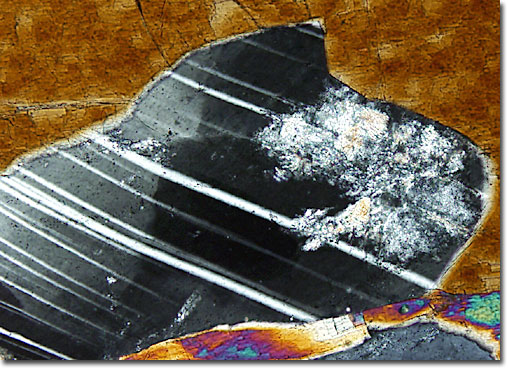|
Amphibolites that are of metamorphic origin are common in a number of areas and are as various as the minerals for which they are named. They are, however, typically medium- or coarse-grained and often predominantly consist of hornblende and plagioclase feldspar. Hornblende is also typically the key mineral found in amphibolites that originate from igneous rocks. Indeed, the most widespread of these rock specimens are often referred to alternatively as hornblendite, a more restrictive moniker that indicates the specific amphibole they contain. Hornblendite and other types of amphibolite are sometimes utilized for industrial purposes, primarily as crushed stone or as a building material.
|
